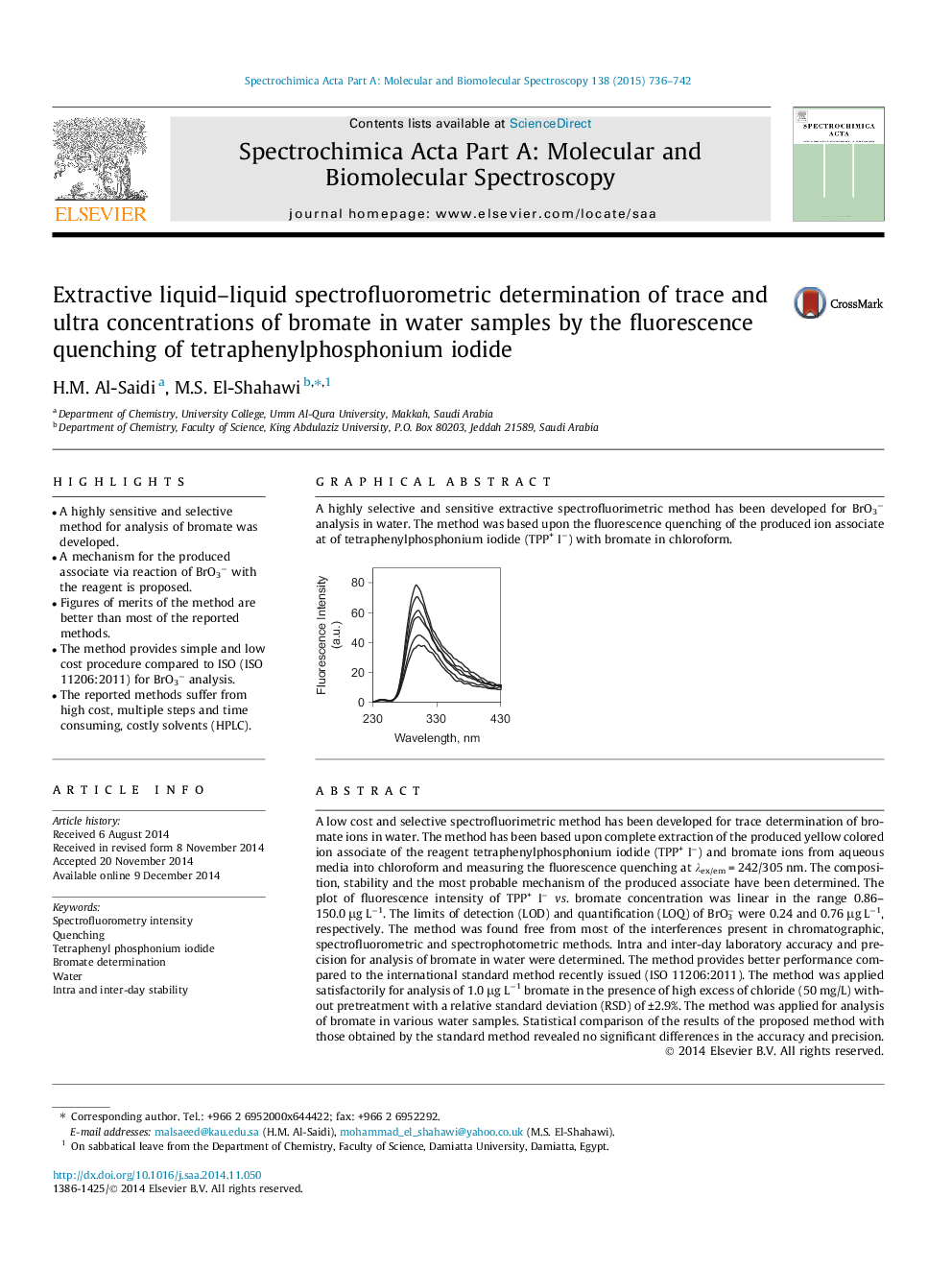| Article ID | Journal | Published Year | Pages | File Type |
|---|---|---|---|---|
| 1229115 | Spectrochimica Acta Part A: Molecular and Biomolecular Spectroscopy | 2015 | 7 Pages |
•A highly sensitive and selective method for analysis of bromate was developed.•A mechanism for the produced associate via reaction of BrO3− with the reagent is proposed.•Figures of merits of the method are better than most of the reported methods.•The method provides simple and low cost procedure compared to ISO (ISO 11206:2011) for BrO3− analysis.•The reported methods suffer from high cost, multiple steps and time consuming, costly solvents (HPLC).
A low cost and selective spectrofluorimetric method has been developed for trace determination of bromate ions in water. The method has been based upon complete extraction of the produced yellow colored ion associate of the reagent tetraphenylphosphonium iodide (TPP+ I−) and bromate ions from aqueous media into chloroform and measuring the fluorescence quenching at λex/em = 242/305 nm. The composition, stability and the most probable mechanism of the produced associate have been determined. The plot of fluorescence intensity of TPP+ I−vs. bromate concentration was linear in the range 0.86–150.0 μg L−1. The limits of detection (LOD) and quantification (LOQ) of BrO3− were 0.24 and 0.76 μg L−1, respectively. The method was found free from most of the interferences present in chromatographic, spectrofluorometric and spectrophotometric methods. Intra and inter-day laboratory accuracy and precision for analysis of bromate in water were determined. The method provides better performance compared to the international standard method recently issued (ISO 11206:2011). The method was applied satisfactorily for analysis of 1.0 μg L−1 bromate in the presence of high excess of chloride (50 mg/L) without pretreatment with a relative standard deviation (RSD) of ±2.9%. The method was applied for analysis of bromate in various water samples. Statistical comparison of the results of the proposed method with those obtained by the standard method revealed no significant differences in the accuracy and precision.
Graphical abstractA highly selective and sensitive extractive spectrofluorimetric method has been developed for BrO3− analysis in water. The method was based upon the fluorescence quenching of the produced ion associate at of tetraphenylphosphonium iodide (TPP+ I−) with bromate in chloroform.Figure optionsDownload full-size imageDownload as PowerPoint slide
